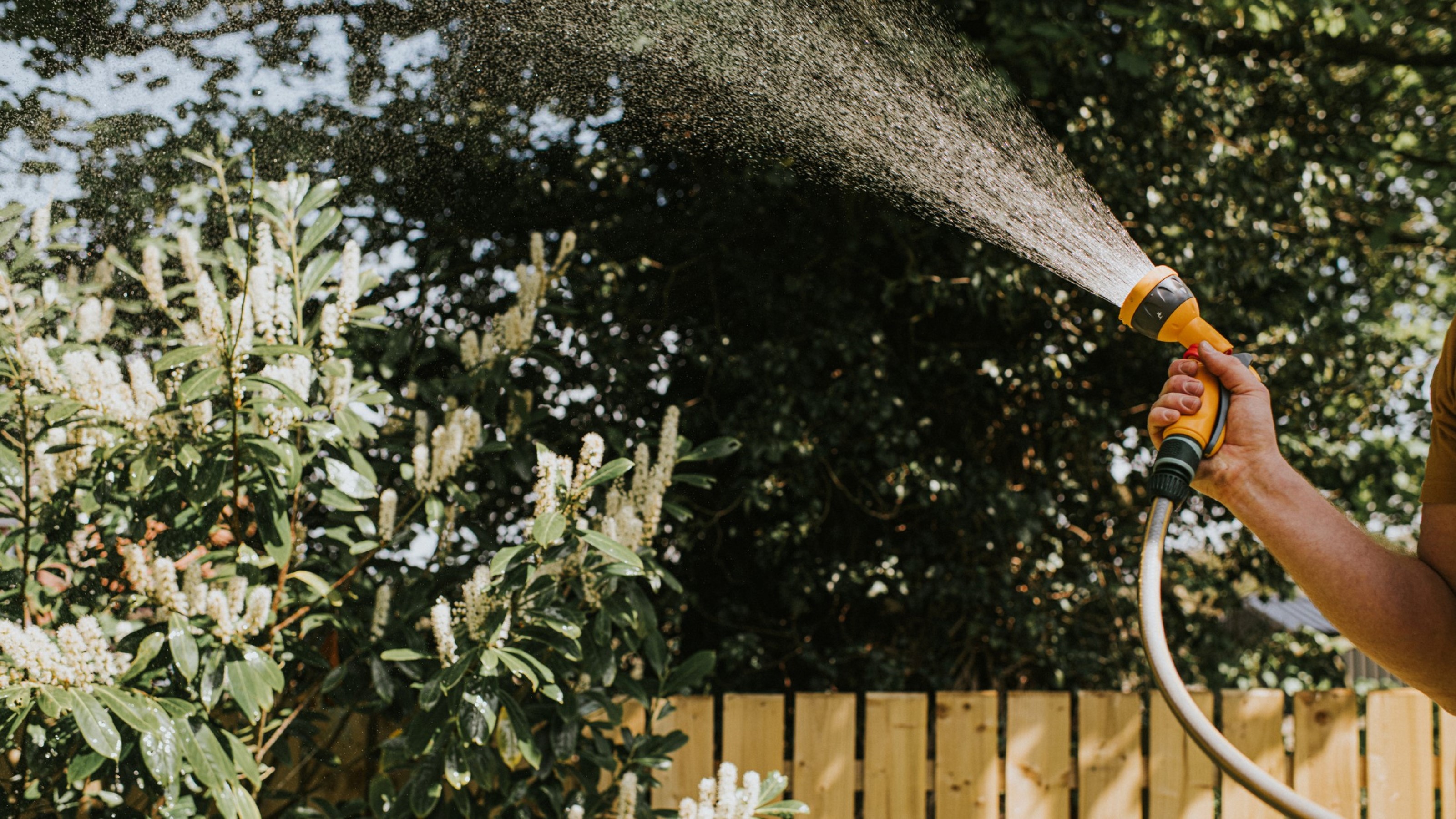A hosepipe ban is coming: here's what you need to know about watering your garden
Here are the rules and exemptions you need to be aware of, and how to keep your garden watered, if a hosepipe ban hits your area

After periods of drought, government-imposed hosepipe bans are not unusual. This summer we are set to see them in various parts of the world, most imminently in England following record-breaking July temperatures.
July 2022 was the driest England had seen since 1935, with parts of the country only seeing eight per cent of the average rainfall for the month. Overall, England has seen the driest spring and summer since the legendarily dry summer of 1976.
If you've just invested in the best garden hose and you are in England, you will need to be quick using it. Hampshire and the Isle of Wight will see the introduction of a hosepipe ban on 5 August, while Kent and Sussex are imposing a hosepipe ban on 12 August until further notice.
If you live in London, there is no firm plan to impose a hosepipe ban yet, but this is subject to change at short notice as the capital's water reserves are running low.
In a nutshell: if you live in an area with a hosepipe ban, you cannot use your hose to water your garden or your car. There are exemptions and other ways to water your garden, however. We've asked Jack Sutcliffe, co-founder of Power Sheds, to share his advice.
Are there ways of watering that are exempt from the hosepipe ban?
Yes, there typically are ways of watering that are exempt from the hosepipe ban. Sutcliffe explains that 'under previous hosepipe and sprinkler bans the use of watering cans, buckets and other water carrying device has been allowed for watering gardens. It’s also ok to use short pieces of hose to fill the watering can or bucket.'
'The purpose of the ban is to stop hosepipes and sprinklers being left on for long periods of time and using up a lot of water. It’s always worth checking with your water company to get more information on the rules in place.'
Get small space home decor ideas, celeb inspiration, DIY tips and more, straight to your inbox!
The rules don’t apply if you connect your hosepipe to a water butt, private borehole, artificial lake or well. Installing a water butt (which you can buy now on Amazon), therefore, is a very good idea if you want to be exempt.
And if you are disabled and on South East Water’s Priority Register, you are also exempt and can use a hosepipe to water your garden during the ban.
Finally. you are exempt if you have a garden pond with a fish in it: 'you can use a hosepipe to top this up if it’s important for the welfare of the fish', says Sutcliffe.
How do you water your garden during a hosepipe ban?
The best way to water plants during a hosepipe ban is to do a thorough soak every once in a while rather than watering a little bit frequently. Sutcliffe says: 'this will get the soil to stay moist for longer. Early morning is the best time of day to water your garden as this will give the soil the best chance to absorb as much moisture as possible before the strong sunshine evaporates it. Evenings are less appropriate for watering, simply because water on leaves overnight can cause fungi to develop.'
Also, think about how you can recycle water used elsewhere in the home. Greywater, such as that leftover from showering or washing dishes, is fine for your plants. Just make sure it doesn't contain anything that could be toxic to plants or animals. Bleach from a cleaning bucket would be a no.
Fill a spare waterbutt or watering cans with greywater, rather than pouring it down the drain.
What's the best way to conserve water in a hosepipe ban?
There are several effective and easy ways to save water during a drought. Sutcliffe's top tips are:
- Let your lawn go dormant: 'Your lawn will turn brown during dormancy, but this isn’t anything to worry about, it will regain its color once the rain returns. Healthy grass can be left without water for three to four weeks without the grass dying. If the dry weather continues you should water the grass enough to wet the soil down to five inches to keep it alive until the next rainfall.'
- Mulch: 'Covering plants, shrubs and ornamental trees in mulch limits the amount of water that is lost through evaporation. Plants that are mulched throughout a drought require less watering because they have more time to soak up the moisture in the soil.' Use mulch that is breathable, ideally grass cuttings. Avoid using plastic sheeting or materials with weed seeds.
- Keep drinking water in a jug in the fridge: 'At home, particularly during hot weather, we run the tap until the water is cold when we want a drink. Using a jug or large container to store water in the fridge until it cools can save up to 50 percent of water used for drinking.'
Hosepipe bans are necessary during periods of extreme droughts – but they are survivable. Follow these tips and you can still keep your garden healthy.
Anna is a professional writer with many years of experience. She has a passion for contemporary home decor and gardening. She covers a range of topics, from practical advice to interior and garden design.